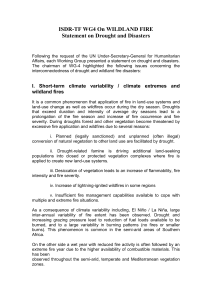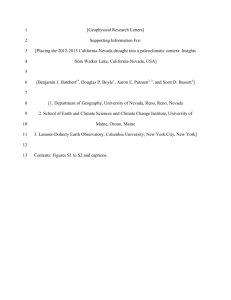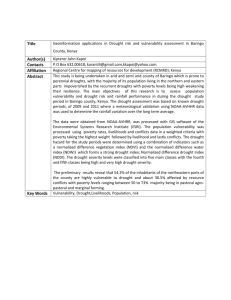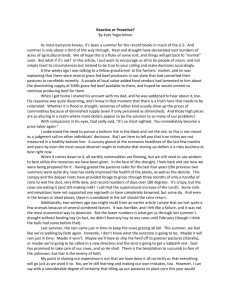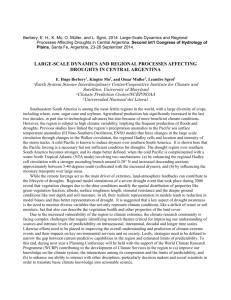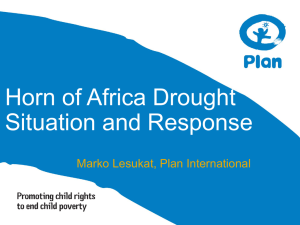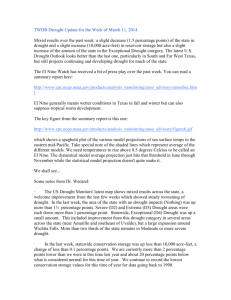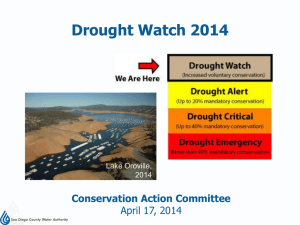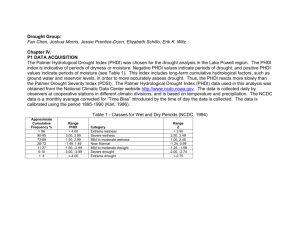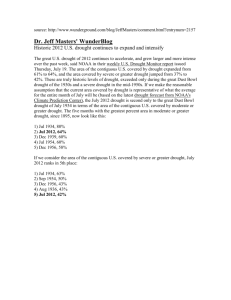map_interpretation_3_11_15_2 (Английский)
advertisement
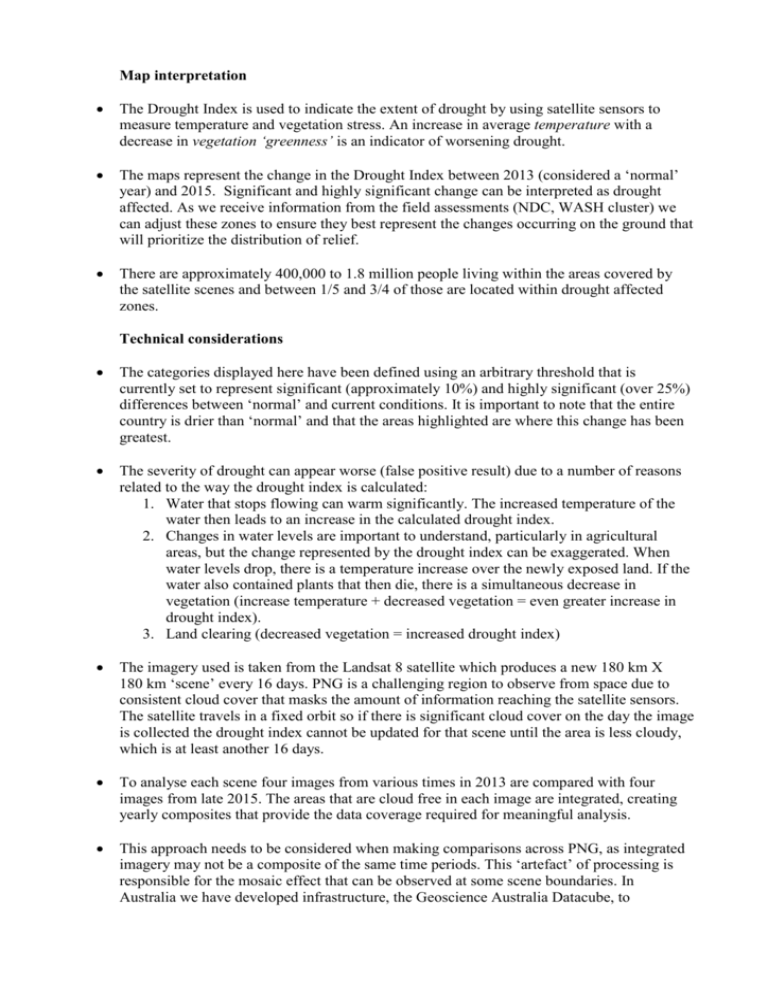
Map interpretation The Drought Index is used to indicate the extent of drought by using satellite sensors to measure temperature and vegetation stress. An increase in average temperature with a decrease in vegetation ‘greenness’ is an indicator of worsening drought. The maps represent the change in the Drought Index between 2013 (considered a ‘normal’ year) and 2015. Significant and highly significant change can be interpreted as drought affected. As we receive information from the field assessments (NDC, WASH cluster) we can adjust these zones to ensure they best represent the changes occurring on the ground that will prioritize the distribution of relief. There are approximately 400,000 to 1.8 million people living within the areas covered by the satellite scenes and between 1/5 and 3/4 of those are located within drought affected zones. Technical considerations The categories displayed here have been defined using an arbitrary threshold that is currently set to represent significant (approximately 10%) and highly significant (over 25%) differences between ‘normal’ and current conditions. It is important to note that the entire country is drier than ‘normal’ and that the areas highlighted are where this change has been greatest. The severity of drought can appear worse (false positive result) due to a number of reasons related to the way the drought index is calculated: 1. Water that stops flowing can warm significantly. The increased temperature of the water then leads to an increase in the calculated drought index. 2. Changes in water levels are important to understand, particularly in agricultural areas, but the change represented by the drought index can be exaggerated. When water levels drop, there is a temperature increase over the newly exposed land. If the water also contained plants that then die, there is a simultaneous decrease in vegetation (increase temperature + decreased vegetation = even greater increase in drought index). 3. Land clearing (decreased vegetation = increased drought index) The imagery used is taken from the Landsat 8 satellite which produces a new 180 km X 180 km ‘scene’ every 16 days. PNG is a challenging region to observe from space due to consistent cloud cover that masks the amount of information reaching the satellite sensors. The satellite travels in a fixed orbit so if there is significant cloud cover on the day the image is collected the drought index cannot be updated for that scene until the area is less cloudy, which is at least another 16 days. To analyse each scene four images from various times in 2013 are compared with four images from late 2015. The areas that are cloud free in each image are integrated, creating yearly composites that provide the data coverage required for meaningful analysis. This approach needs to be considered when making comparisons across PNG, as integrated imagery may not be a composite of the same time periods. This ‘artefact’ of processing is responsible for the mosaic effect that can be observed at some scene boundaries. In Australia we have developed infrastructure, the Geoscience Australia Datacube, to overcome this issue to systematically monitor changes across the Australian landscape. Currently this does not extend over PNG or the Pacific region. We acquired several terabytes of data for around 1000 scenes from the USGS Landsat archive which get processed at the NCI supercomputing facility as required. As PNG does not have a permanent observation framework we must manually interrogate and select scenes. Scene selection has been completed for the whole of Papua New Guinea including outer islands. The population statistics provided are a broad estimate and should be viewed with caution due to uncertainties associated with data accuracy. The statistics are based on population estimates for Census Units (the smallest unit for census data aggregation), and are based on an adjustment of estimates made for 2010, derived from data provided through the World Bank GFDRR and the District level data from the National Population and Housing Census 2011.

